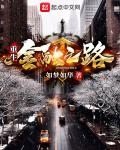Chapter 501: Changes in Fortune
Just when the whole country was worried about the loss of two Hollywood giants, less than a month later, Japanese companies' overseas buying spree was staged again.
In October, Mitsubishi Estate announced that it had purchased a 51% stake in Rockefeller Group, the owner of Rockefeller Center, for US$846 million.
In other words, Mitsubishi gained control of Rockefeller Center, and one problem after another arose.
Rockefeller Center is a group of buildings located in the center of Manhattan, New York City, USA. It is a city within a city consisting of 19 skyscrapers.
It is the center of the United States' politics, economy, culture, transportation, education and other aspects, and is also one of the most prosperous, developed and wealthy regions in the world.
Here is the headquarters of General Electric, the headquarters of the American Broadcasting Center, a ski resort, and an art gallery.
In 1987, Rockefeller Center was even recognized as a national historic landmark by the U.S. government.
However, such a symbolic building was once again acquired by Japanese enterprises.
Faced with the Western media that were about to react with stress, Mitsubishi seemed not to care.
They believed they had made a wise and far-sighted investment, and Mitsubishi intended to build Rockefeller Center into an international business and cultural center, while also demonstrating Japan's economic strength and cultural status.
Mitsubishi Estate Chairman Akio Kobayashi responded to a reporter’s question: “We are not here to take anything away, but to share something.
We hope that this acquisition will enhance the friendship and cooperation between Japan and the United States.”
Look at this posture, it's completely like the rich boss is taking care of his younger brother's business.
What kind of cultural invasion is this? What kind of American symbol was bought?
My purchase of Rockefeller Center by Mitsubishi is exactly what your Rockefeller Group has been dreaming of. You should thank me.
To be honest, as the buyer, it is not excessive for Mitsubishi to have such a righteous attitude. After all, it is the buyer who paid real money.
However, at this time, the United States had already been full of resentment towards Japan because of Japan's buying spree.
Therefore, Mitsubishi’s remarks not only failed to gain the understanding of the US media, but instead brought about greater side effects.
However, while the North American media's attack on Japan continued, Shirakawa Kaede's attention had already shifted to Japan.
Although because of the issues between Sony and Mitsubishi, the issue of Shirakawa Holdings' acquisition of Paramount has once again been brought to the forefront.
However, his original promise to the Western media was fulfilled. He hired a local team in North America to manage Paramount, and the corporate system remained unchanged.
All these helped Shirakawa Paramount get through the adjustment period in the first few months, so Shirakawa didn't care much about the media bringing up the same old things.
Will Shirakawa Holdings intervene in Paramount's subsequent management? Of course, but not right now.
In order to avoid touching the sensitive nerves of Americans, he will take action quietly after the storm has passed.
Otherwise, if we don't have our own people entering Paramount, it is inevitable that the other party will pretend to obey us but actually disobey us over time.
After Sony acquired Columbia, it suffered a lot of losses.
The amount of losses in just a few years is almost equal to the original price for acquiring Colombia.
With such a huge hidden pit, how could Baichuan Feng repeat the same mistake?
Therefore, intervention in Paramount is a necessary action, at least the management must keep it firmly in their own hands.
Of course, let’s put this aside for now. The Bank of Japan has started to make some moves again.
Just last October, the Bank of Japan announced another interest rate hike, adjusting the interest rate from 3.25% at the beginning of May to 3.75%.
Along with this interest rate hike policy, the Ministry of Finance also issued a notice to all financial institutions: all banks and other financial institutions need to control the scale of real estate loans.
Other banks did not take this simple sentence seriously, but Beidu Bank immediately followed up and began to implement a loan tightening policy.
Arai Yu is worried about how to deal with the loan requests from old customers who come to him. Well, now he has the reason, right?
The Kitato Bank had no choice but to comply with the Ministry of Finance's notice.
In fact, the Ministry of Finance only issued this announcement tentatively, and there was no detailed data to explain the specific restrictions.
Because there are major disagreements within the Ministry of Finance on this issue, they are prepared to impose verbal constraints and let the market regulate itself.
Unfortunately, although there was another round of interest rate hikes this time, the stock market only fluctuated slightly and then continued to rise sharply.
As for the property market, it has not been affected by the interest rate hike policy from beginning to end and continues to grow rapidly.
Although there is little discussion in the outside world about the Bank of Japan's interest rate hike, Shirakawa Feng has already felt the chill in advance .
It has been less than half a year since the last interest rate hike, and as far as he knows, Mr. Yasushi Mieno has not yet taken office.
In other words, these two consecutive interest rate hikes were entirely the Ministry of Finance's own idea.
What about Yasushi Mieno, who is famous for his "austerity advocacy"? What was his situation like after he took office as the Governor of the Bank of Japan?
Baichuan Feng could already imagine the coming thunderstorm. No, in fact, dark clouds had already begun to gather in the sky above his head.
Why did the Ministry of Finance suddenly change its attitude and start cutting interest rates twice in less than half a year?
As the end of the year approached, the Ministry of Finance conducted a statistics and found that debt in the Japanese economy has accounted for 90% of the total!
The whole country is playing the game of "Pass the Parcel", and the whole of Japan is "the rich exploit the poor".
How to understand this sentence? Simply put, Japan's economic figures are too inflated and full of bubbles!
All of Japan’s money has basically been emptied out by the stock market and the property market, and people’s so-called assets are accumulated through housing prices.
Behind these assets, the huge amount of bank loans have not yet been deducted. Now everyone is using loans to acquire land.
Even though they have so many houses, their assets will shrink by 90% after removing the loans. This is the current situation in Japan.
It seems that the middle class and capitalists are partying, but the ordinary people at the bottom can hardly make ends meet, let alone buy houses.
Is the slogan of “100 million middle class” that was shouted out before really true?
It's impossible. During the bubble era, there were still a large number of lower-class people in Japan.
At the same time, government data also show that the birth rate is declining.
As the population gradually decreases, there won’t be as many people in need of land in the future.
With fewer people buying houses, can the current high land prices be sustained?
Even a child knows the answer to this question.
And because hot money has flowed into the stock market and the property market, loan data for the physical manufacturing industry has dropped below 25%, while the real estate industry has soared to more than 40%.
Because everyone was speculating in stocks and real estate, and the yen was appreciating, a large number of factories in Japan were unable to start operations.
Entrepreneurs took the bank's money and set up factories in Southeast Asia, and then dumped cheap products in their own country, which led to a sharp increase in the unemployment rate in their own country.
If this continues, Japan will collapse and the country will go bankrupt!
To put it bluntly, the prosperity of the stock market and the real estate market is like a castle in the air. Without the support of the real manufacturing industry, the bubble will burst sooner or later.
And the Japanese government is going to use its head to support the $150 trillion bubble?
Not to mention Japan, even the whole world combined might not be able to support it.
So it’s not that the Japanese government doesn’t want to save this bubble, but that it really can’t save it.
Since it cannot be saved, let's quickly raise interest rates to allow the speculative market to shift its position, slowly eliminate the bubble and soften the property market.
Unfortunately, the results are not very ideal at the moment.
Except for Kitato Bank, which responded to the call of the Ministry of Finance, other major financial institutions are still immersed in the dream of a prosperous real estate market.
However, it’s not that no one is aware of the abnormality of the situation, and overseas capital has the most sensitive sense of smell.
The Bank of Japan's two interest rate hikes have already made them feel a little unusual, and now everyone is waiting and watching.
It depends on the subsequent actions of the Japanese government. If interest rates are raised again, they may have to withdraw early.
They came to Neon just to make money, not to support the Neon government.
So if the wind is blowing in the wrong direction, run away immediately.
Of course, the people of Japan don’t think so. They still believe in those two myths: “The stock market won’t fall, and the land price won’t drop.”
Except for a few people who have smelled the crisis, most people are immersed in the happiness of the "bubble" and cannot extricate themselves.
Taking into account the special situation in Japan, Shirakawa Holdings is also accelerating its overseas investment .
Shirakawa Motors, which was decided to be established in China last year, has already been implemented this year.
Because of the previous investment by Shirakawa Electric, Shirakawa Holdings also maintains a good cooperative relationship with the local government here.
Therefore, in terms of the location of the main plant, Shirakawa Automobile still chose Guangdong Province.
So after completing a series of review processes, the GAC Shirakawa sign was put up at the end of last year.
In fact, in the original time and space, GAC was not established until the 1990s.
However, in recent years, with the establishment of Shirakawa Electric here, the financial situation of Guangdong Province has also improved greatly.
With the growth of overseas export business and the gradual development of the local market, Shirakawa Electric has also brought huge wealth to the local government.
Because they had money in hand, Guangdong Province's ambitions grew after hearing about Baichuan Holdings' plans.
So after both sides discussed it, Guangdong Province decided to create its own car brand.
Against this background, GAC came into being.
The shares remain the same as before, GAC 51% and Shirakawa Motor 49%.
This is a necessary condition for entering China, and Baichuan Feng has no intention of changing it.
After all, he is here to make money, not to fight.
Besides, Shirakawa Motors is just a start-up. Even Volkswagen had to bow down to it, so why should it be treated specially?
After some negotiations between the two rookies, GAC Shirakawa officially built a factory in Yangcheng.
Of course, the construction of the main plant still needs support from Subaru. Neither Shirakawa Holdings nor GAC can do it.
According to the plan, the first phase of the factory is expected to produce 150,000 vehicles annually, and Subaru will first build two demonstration production lines.
The remaining production capacity construction will be undertaken by GAC, and the design of the vehicle models is similar.
Shirakawa Automobile R&D Center will still be located in Guangzhou, and it is being built faster than the factory, and now has its own office location.
All the initial designers came from Subaru, and GAC recruited a lot of mechanical talents.
They may not have been exposed to car design, or it may have always remained at the theoretical stage.
But without exception, everyone was so eager to learn that even the Subaru employees who came with the group were surprised.
Their hard work and tenacity gradually impressed the Subaru employees who initially looked down on this place.
The first model that Shirakawa Motors is going to launch is a modified version of the original Subaru 1000.
Compared with the original Neon version, it has made certain technical updates in the engine and chassis to meet the geographical characteristics and usage requirements of China.
This modified version is named Xingyao, which means Subaru star.
The manufacturing process of this car model is simple, and because it has a previous design foundation, it is also suitable for everyone to practice.
It is expected that it will be officially launched in China in 1991, by which time the OEM should have completed the tuning.
Baichuan Feng doesn't know what the result of this investment of nearly 500 million US dollars will be, but he believes that there will be a new brand in the Chinese automobile market in the future.
While things were bustling in full swing on the other side of the sea, Neon once again reached a turning point in its destiny.
Yasushi Mieno, who was known as the "Heisei Demon", officially became the new president of the Bank of Japan in December.
Crash~, lightning flashed across the neon sky.






